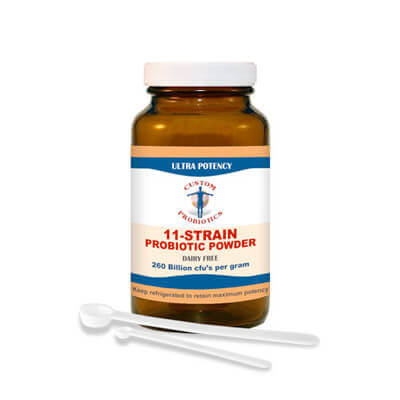Crohn’s Disease
Two diseases constitute Inflammatory Bowel Disease – Ulcerative Colitis and Crohn’s Disease. They are distinct but similar, and both are chronic, relapsing and remitting conditions. They affect around 1.5 people per 1,000 in the Western World.
Crohn’s is a condition in which areas of inflammation occur anywhere along the intestinal tract, especially the last segment of the small intestine (ileum) and the colon. It causes inflammation, deep ulcers and scarring to the wall of the intestine and often occurs in patches. Crohn’s disease involves all layers of the intestine. In Crohn’s, normal, healthy sections of bowel may lie between patches of diseased bowel. If you suspect that you have Crohn’s disease, you should seek appropriate medical help without delay. Diagnosis is usually by means of colonoscopy and mucosal biopsy. Initial treatment to reduce flare-ups is administration of steroids.
Recommended Product
Custom Probiotics 5 Strain Bifido powder 50g
DAIRY FREE 5 strain high potency probiotic powder 400 billion cfu’s/gram
Bifidobacteria produce anti inflammatory cytokines that down regulate inflammation in the gut and the body.
INGREDIENTS
B. Lactis
B. Longum
B. Bifidum
B. Infantis
B. Breve





